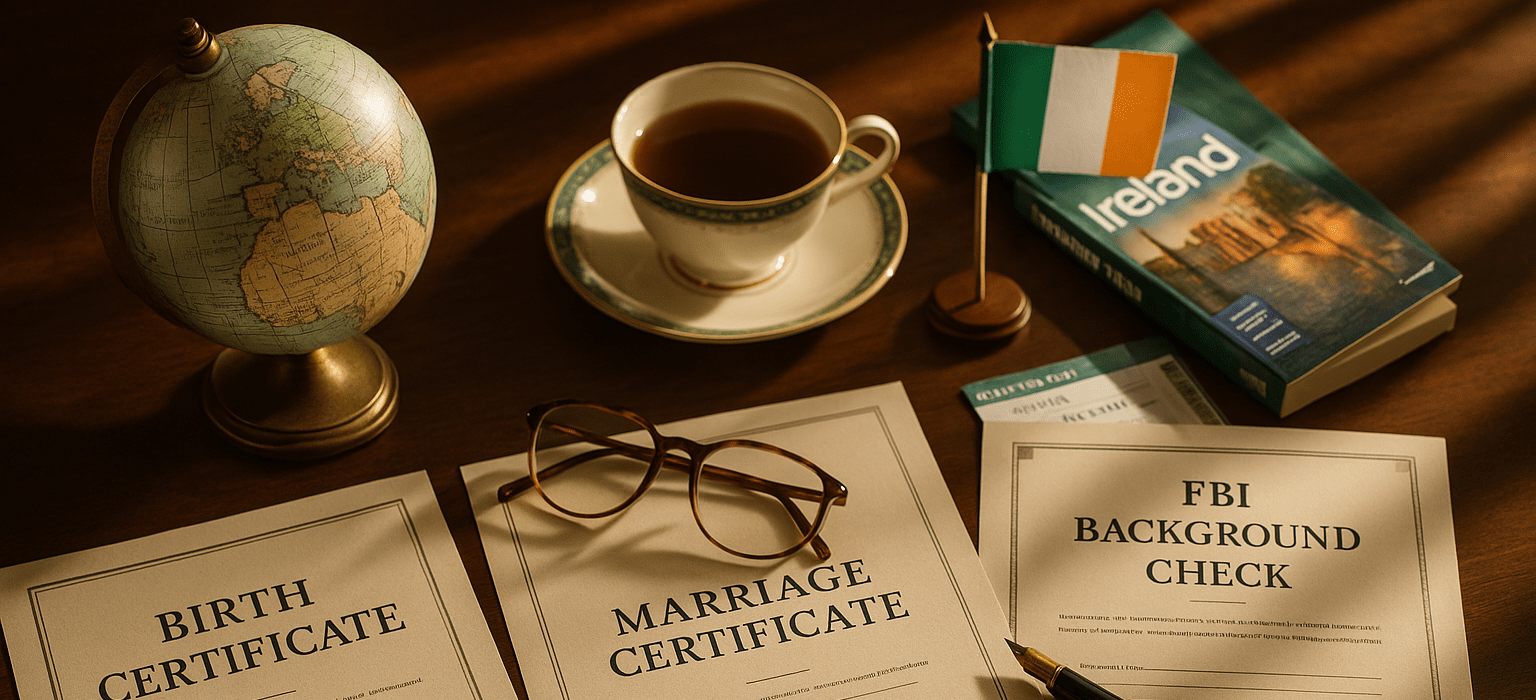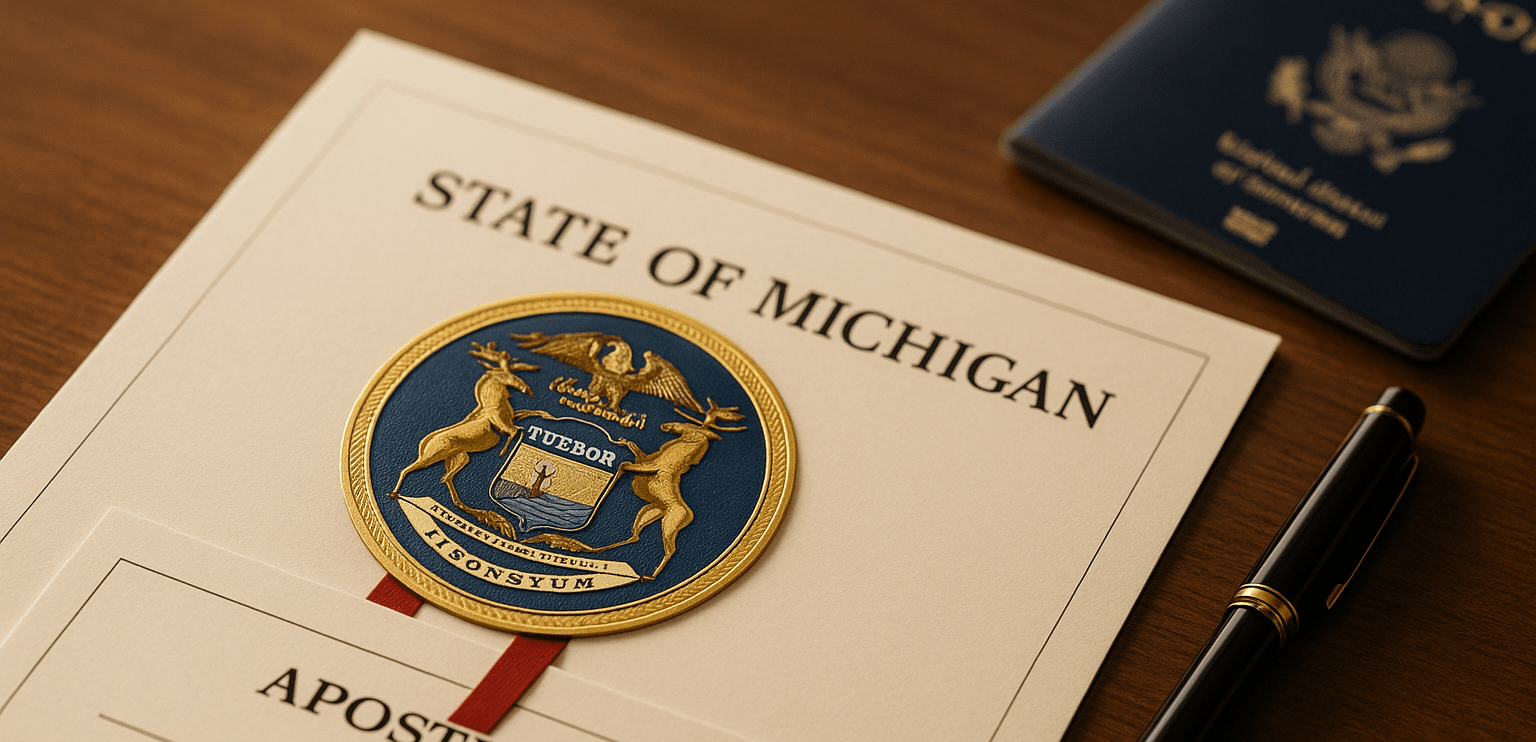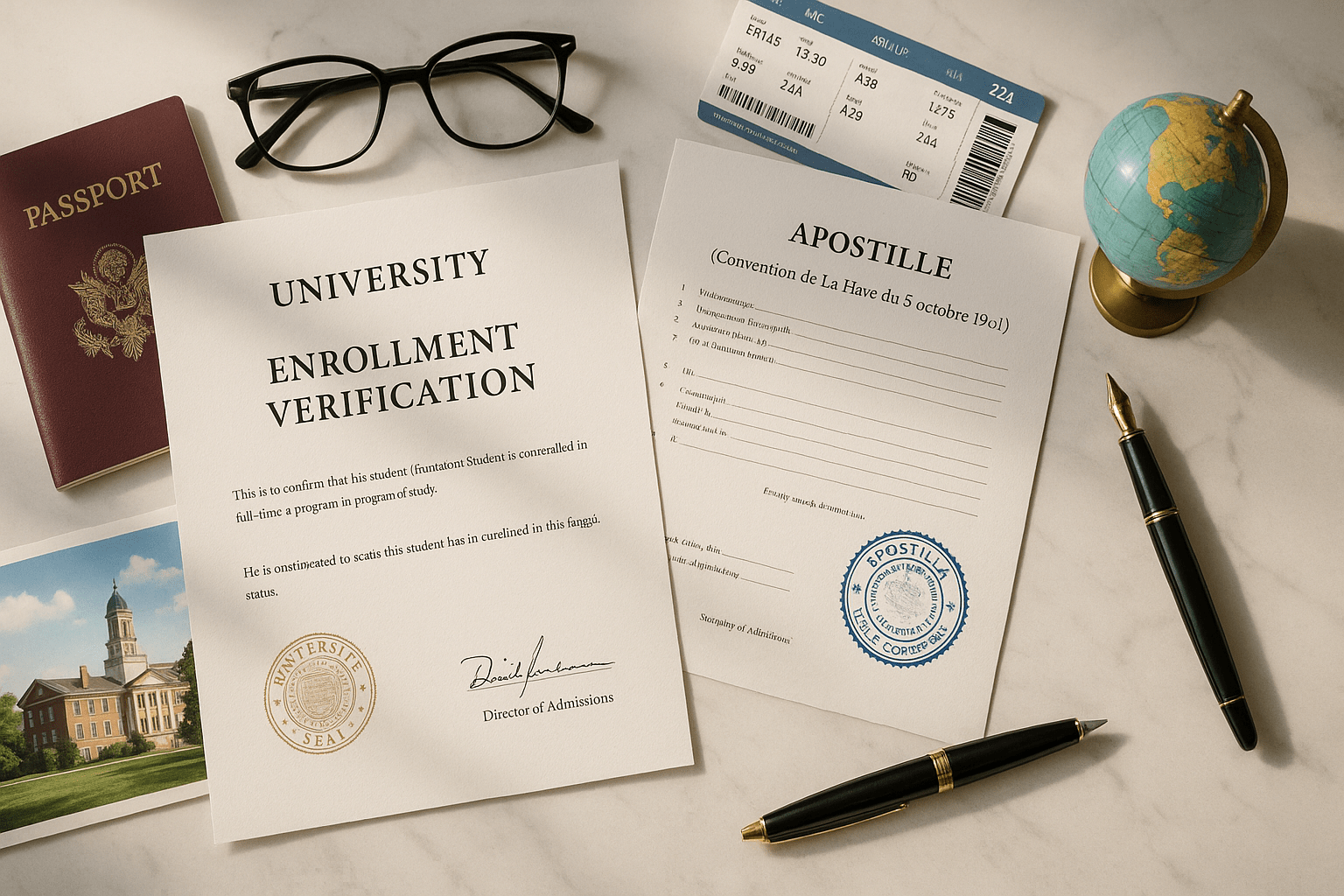
Apostille High School Diploma
What Is an Apostille?
An apostille is a type of international certification issued by a country’s government that makes a document legally valid in another country that is a member of the Hague Apostille Convention. In the U.S., apostilles are typically issued by the Secretary of State in the state where the document was originally issued.
This certification verifies the authenticity of the document’s signature, the capacity of the person signing the document, and the identity of the seal or stamp it bears. You may need an apostille diploma if you are planning to study, work, or immigrate to a country outside the United States. Many educational institutions and foreign governments require this as part of their validation process.
When Do You Need to Apostille a High School Diploma?
You may need to apostille your high school diploma for several reasons. The most common is when you’re applying to study at a foreign university, particularly in countries like Spain, Italy, or Germany that require legalized copies of diplomas for academic admissions.
You might also need it for employment, visa applications, or permanent residency processes abroad. For example, if you’re planning to work as an English teacher overseas, the local government may ask for a high school diploma apostille. If you’re wondering how to validate a foreign high school diploma in the USA, the process may differ and require credential evaluation instead of an apostille.
Step-by-Step Guide to Apostilling a High School Diploma
Step 1: Obtain a Certified Copy of Your Diploma
Start by obtaining a certified copy of your high school diploma from the school that issued it. If you’ve lost your original, most schools can provide a new certified copy upon request. Make sure it includes the school seal and the principal’s signature.
This copy must be suitable for notarization, which may be required before the apostille can be issued. In some states, schools may notarize the diploma directly, while others require a notary public to verify it.
Step 2: Notarize the Diploma (If Required)
Some states require that your diploma be notarized before it can be apostilled. This involves taking your certified copy to a licensed notary public who will verify the authenticity of the document and witness your signature, if needed.
Make sure you follow your state’s specific requirements, which can be found on the Secretary of State’s website. For example, California’s notarization rules are available on the California Secretary of State website.
Step 3: Contact the Secretary of State’s Office
Once you have a notarized copy (if required), you’ll need to submit it to your state’s Secretary of State for the apostille. Visit their official website to download the correct apostille request form and review the submission instructions.
Include all required paperwork and payment. Some states allow walk-ins, while others process only by mail. Double-check processing times and mailing addresses, which can vary widely. For example, you can find New York’s apostille request details on the New York Department of State website.
Step 4: Submit Your Documents and Payment
Mail or deliver your notarized diploma, completed request form, and payment to the Secretary of State. Fees typically range from $5 to $25 per document, depending on the state.
You should also include a self-addressed stamped envelope or pre-paid shipping label for the return of your apostilled diploma. Processing times can range from a few days to several weeks.
Step 5: Wait for Processing and Delivery
Once your request is received, the Secretary of State will verify the notary’s commission and issue an apostille certificate attached to your diploma. This results in a fully legalized copy of your diploma.
Once received, your apostille high school diploma is ready to be used abroad. Keep copies and store the original securely. If you’re using the document digitally, check with the receiving institution to see how to upload high school diploma records for their application process.
Apostille vs. Authentication: What’s the Difference?
It’s important to know the difference between an apostille and authentication. An apostille is used for countries that are members of the 1961 Hague Convention. Authentication is needed for non-member countries and usually requires additional steps such as U.S. Department of State certification and embassy legalization.

If you’re dealing with a country like China or the UAE, you’ll likely need authentication rather than an apostille. You can check the list of Hague Convention countries on the Hague Conference official website.
How Long Does the Process Take?
Standard processing for a diploma apostille takes anywhere from 5 to 15 business days, depending on your state’s workload. However, if you need your documents quickly, expedited options are often available for an additional fee.
At EZ Apostille, we offer express services that can significantly reduce turnaround time. As Benjamin Franklin once said, “Lost time is never found again,” and our mission is to help you avoid unnecessary delays.
How Much Does It Cost to Apostille a Diploma?
The cost of obtaining an apostille diploma USA depends on your location and whether you use a service. State fees are generally modest, but when you add notarization, mailing, and potential expediting, the price can rise.
Using a professional service can be more cost-effective and reliable in the long run. At EZ Apostille, we ensure your documents are processed correctly the first time. For details on what we offer, visit our apostille services page.
Can You Apostille a Diploma Yourself?
Yes, it’s possible to apostille your diploma without professional help. However, it requires attention to detail and strict adherence to state-specific rules. Missing a step or using the wrong form can delay your application.
Many people find it easier to work with professionals who are familiar with each state’s regulations. If you’re unsure how to apostille my high school diploma correctly, we’re here to assist every step of the way.
Tips and Common Mistakes to Avoid
Always confirm the document requirements of the country you’re submitting your diploma to. Requirements can vary, and sending an unapproved version could delay your plans. Here are a few common mistakes:
- Not notarizing the diploma when required
- Using incorrect or outdated apostille request forms
- Forgetting to include a return envelope
- Mailing documents to the wrong office
- Assuming all countries accept apostilles
To stay on track, consider the following tips:
- Read your state’s Secretary of State website carefully
- Use certified mail with tracking when sending documents
- Double-check the name of the recipient on the form
- Keep digital copies of everything
Avoid these pitfalls by using reliable professionals like EZ Apostille, who know the process from start to finish.
Conclusion
Getting your high school diploma apostilled is a straightforward process when you understand the steps and requirements. Whether you’re moving abroad for work, school, or other opportunities, having a properly legalized diploma ensures smooth processing.
Still have questions? The team at EZ Apostille is here to help you every step of the way. Contact our experts to get started today!






Hello
We are creating a Spanish Home Schooling project to be launched in South America. Our “Umbrella School” will be “iBis Learning Dual Language school, located in Houston, TX.
We want to provide transcripts, grades reports, and certificates of completion to our students and families.
What sort of requirements would need our umbrella school iBis Learning to comply with the Hague Convention Apostille?
Please, advice.
Sincerely,
Ligia “GiGi” Vasquez
Director
Hello Ligia!
Great to hear about iBis Learning! For the fastest, most accurate apostille guidance, please drop your details in our quick intake form here.
If you’ll be preparing transcripts every month, check out our Affiliate Program, it gives schools like yours volume pricing + a referral commission. You can see the perks and sign-up here.
Talk soon, and congrats on the new venture!